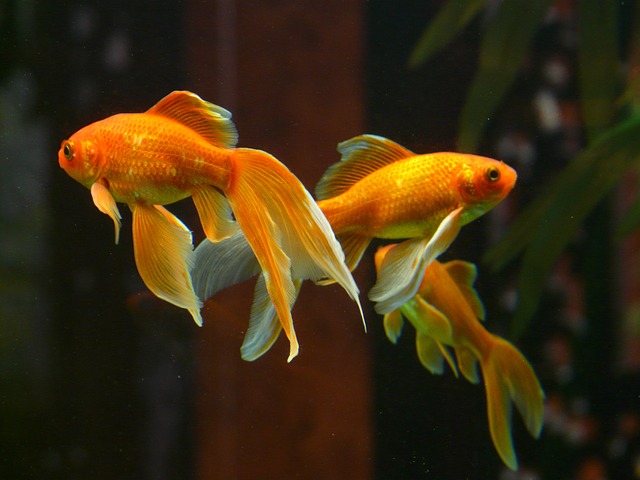Table of Contents
If you’re thinking of getting a goldfish, you might be wondering if they need a filter in their tank. The answer is yes! Goldfish produce a lot of waste, and without a filter, their tank can quickly become dirty and unhealthy for them to live in.
A filter helps to remove waste and debris from the water, keeping it clean and clear. It also helps to aerate the water, providing oxygen that goldfish need to breathe.
Without a filter, the water can become stagnant and low in oxygen, which can be harmful to your goldfish.
When choosing a filter for your goldfish tank, it’s important to consider the size of the tank and the number of goldfish you have.
A filter that is too small for your tank won’t be able to keep up with the waste production, while a filter that is too large can create strong currents that can stress out your goldfish.
It’s best to choose a filter that is specifically designed for goldfish tanks and to follow the manufacturer’s recommendations for tank size and fish population.
The Importance of Filtration
If you’re considering getting a goldfish, it’s important to understand the role of filtration in maintaining a healthy environment for your fish.
A filter is a crucial component of a goldfish tank, as it helps to remove harmful substances from the water and keep the tank clean. In this section, we’ll explore the role of filters in a goldfish tank and the benefits of using a filter.
The Role of Filters in a Goldfish Tank
Goldfish produce a lot of waste, which can quickly accumulate in the tank and lead to poor water quality. This waste can include uneaten food, feces, and other debris. Without proper filtration, these substances can build up and create a toxic environment for your fish.
A filter helps to remove these harmful substances from the water by trapping them in a filter media. The filter media can be made of various materials, such as foam, ceramic, or activated carbon. As water flows through the filter, the media traps debris and purifies the water.
Benefits of Using a Filter in a Goldfish Tank
Using a filter in your goldfish tank has several benefits. Firstly, it helps to maintain good water quality, which is essential for the health of your fish.
Poor water quality can lead to stress, disease, and even death in goldfish. A filter ensures that the water remains clean and free from harmful substances.
Secondly, a filter helps to reduce the frequency of water changes. Without a filter, you would need to change the water in your tank frequently to maintain good water quality.
This can be time-consuming and stressful for your fish. With a filter, you can reduce the frequency of water changes and provide a more stable environment for your goldfish.
Finally, a filter can help to reduce the amount of maintenance required for your tank. By removing debris and other substances from the water, a filter can help to keep the tank clean and reduce the amount of algae growth. This means less cleaning and maintenance for you.
In conclusion, using a filter in your goldfish tank is essential for maintaining good water quality and keeping your fish healthy.
It helps to remove harmful substances from the water, reduce the frequency of water changes, and reduce maintenance requirements. Investing in a good quality filter is a wise decision for any goldfish owner.
Types of Filters for Goldfish Tanks
When it comes to maintaining a healthy environment for your goldfish, a filter is an essential piece of equipment.
Filters help to remove waste, excess food, and other debris from the water, which can otherwise lead to poor water quality and health problems for your fish. Here are the three main types of filters for goldfish tanks:
Mechanical Filters
Mechanical filters are designed to physically trap and remove debris from the water. They work by forcing the water through a filter media, such as foam or floss, which traps particles as the water passes through. Mechanical filters are the first line of defense against dirt and debris in the water.
Some common types of mechanical filters include sponge filters, hang-on-back filters, and canister filters.
Sponge filters are inexpensive and easy to maintain, making them a popular choice for small goldfish tanks.
Hang-on-back filters are also affordable and easy to install, while canister filters are more expensive but offer superior filtration and can handle larger tanks.
Biological Filters
Biological filters are designed to remove harmful toxins from the water by promoting the growth of beneficial bacteria.
These bacteria break down ammonia and nitrite, which are produced by fish waste and uneaten food, into less harmful nitrate. Biological filters are essential for maintaining a healthy nitrogen cycle in your goldfish tank.
Some common types of biological filters include sponge filters, bio-wheels, and canister filters. Sponge filters are a popular choice for small tanks, while bio-wheels are designed to provide a large surface area for beneficial bacteria to grow. Canister filters are also effective for biological filtration and can handle larger tanks.
Chemical Filters
Chemical filters are designed to remove impurities from the water through the use of chemical media, such as activated carbon or zeolite.
These filters are useful for removing toxins, odors, and discoloration from the water. However, they are not a substitute for mechanical and biological filtration.
Some common types of chemical filters include hang-on-back filters and canister filters. Hang-on-back filters are affordable and easy to install, while canister filters offer superior filtration and can handle larger tanks.
In conclusion, when it comes to choosing a filter for your goldfish tank, it’s important to consider the size of your tank, the number of fish you have, and your budget.
A combination of mechanical, biological, and chemical filtration is ideal for maintaining a healthy environment for your goldfish.
Factors to Consider When Choosing a Filter
When choosing a filter for your goldfish tank, there are several factors to consider. Here are some important factors to keep in mind:
Tank Size
The size of your tank will determine the size and type of filter you need. Generally, the rule of thumb is that you need a filter that can handle at least twice the volume of your tank per hour. For example, if you have a 20-gallon tank, you need a filter that can handle at least 40 gallons per hour.
Number of Goldfish
The number of goldfish in your tank will also affect the type of filter you need. Goldfish produce a lot of waste, so the more goldfish you have, the more powerful your filter needs to be. As a general rule, you need a filter that can handle at least 10 gallons per hour per goldfish.
Type of Goldfish
The type of goldfish you have will also affect the type of filter you need. Some types of goldfish, such as fancy goldfish, have longer fins and are less active than other types of goldfish.
These types of goldfish produce less waste and require a less powerful filter. On the other hand, common goldfish are more active and produce more waste, so they require a more powerful filter.
Water Quality
Maintaining good water quality is essential for the health of your goldfish. A good filter will help keep the water clean and clear by removing waste and other pollutants. When choosing a filter, look for one that can handle both mechanical and biological filtration.
Mechanical filtration removes debris and waste from the water, while biological filtration helps to break down harmful toxins.
In summary, when choosing a filter for your goldfish tank, consider the size of your tank, the number and type of goldfish you have, and the quality of your water. By choosing the right filter, you can help ensure that your goldfish stay healthy and happy.
Maintenance of Filters
Goldfish tanks require filters to keep the water clean and healthy for your fish. Filters remove debris, excess food, and waste from the water, reducing the amount of harmful bacteria and toxins that can build up in the tank. However, filters need regular maintenance to keep them working effectively.
Cleaning the Filter
Cleaning the filter is an essential part of maintaining a healthy tank. Filters can become clogged with debris, which can reduce their effectiveness and even harm your fish.
Cleaning the filter involves removing the filter media, rinsing it with water, and replacing it. You should clean the filter media every two to four weeks, depending on the size of your tank and the number of fish you have.
Replacing Filter Media
Over time, filter media can become clogged and less effective at removing debris and waste from the water. When this happens, you should replace the filter media.
The frequency of replacement depends on the type of filter media you use and the size of your tank. Check the manufacturer’s instructions for guidance on when to replace the filter media.
Maintaining Water Quality
Maintaining water quality is essential for the health of your goldfish. Filters help to keep the water clean, but you also need to monitor the water quality regularly.
Test the water for ammonia, nitrite, and nitrate levels at least once a week. If the levels are too high, you may need to change the water or adjust the filter settings.
In conclusion, maintaining your filter is crucial to the health and well-being of your goldfish. Cleaning the filter, replacing the filter media, and monitoring the water quality are all essential parts of filter maintenance.
By following these simple steps, you can ensure that your goldfish have a clean and healthy environment to live in.







